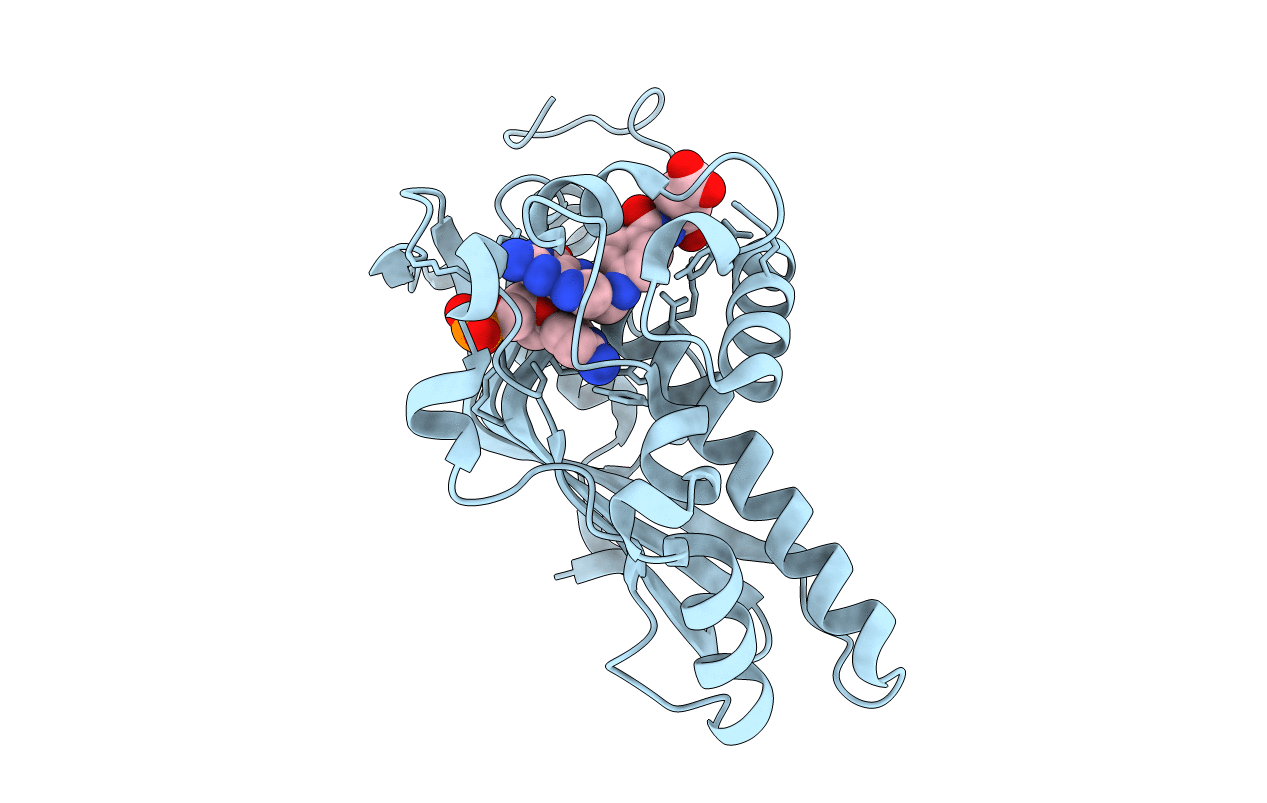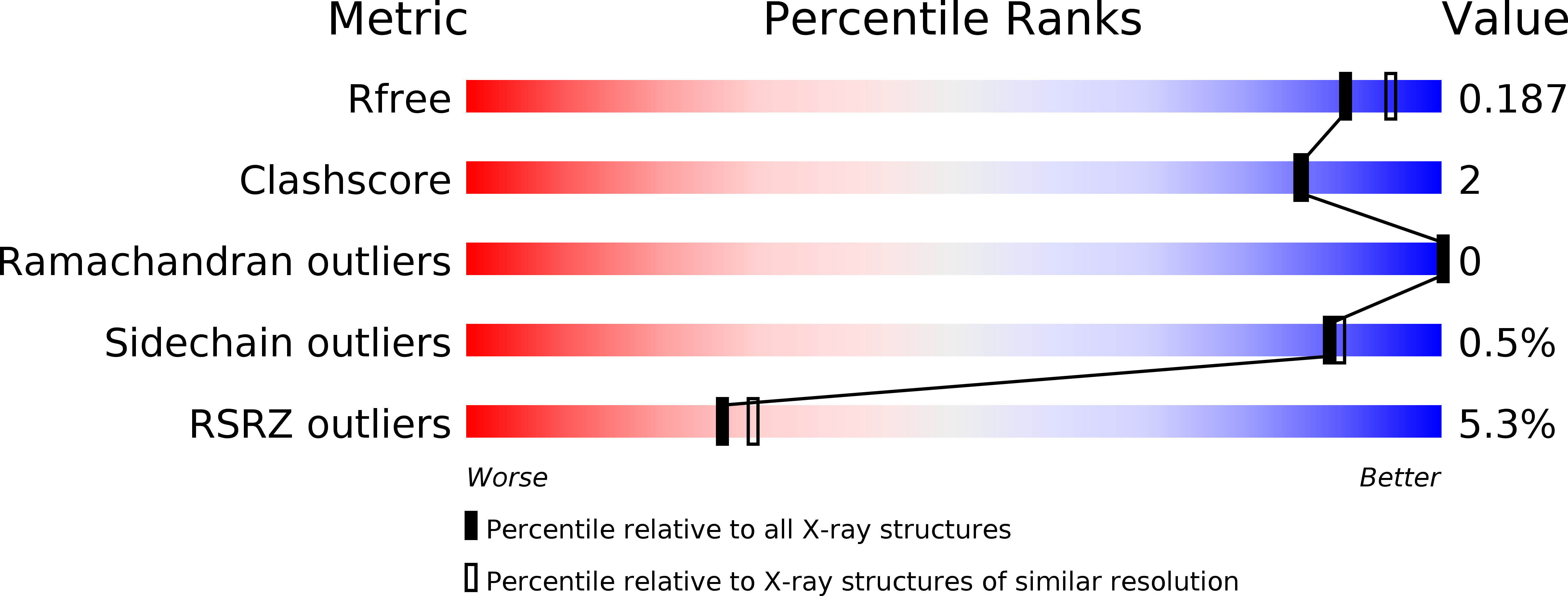
Deposition Date
2018-07-12
Release Date
2019-01-02
Last Version Date
2023-11-22
Entry Detail
PDB ID:
6A9A
Keywords:
Title:
Ternary complex crystal structure of dCH with dCMP and THF
Biological Source:
Source Organism:
Enterobacteria phage T4 (Taxon ID: 10665)
Host Organism:
Method Details:
Experimental Method:
Resolution:
1.90 Å
R-Value Free:
0.18
R-Value Work:
0.15
R-Value Observed:
0.15
Space Group:
I 2 2 2


